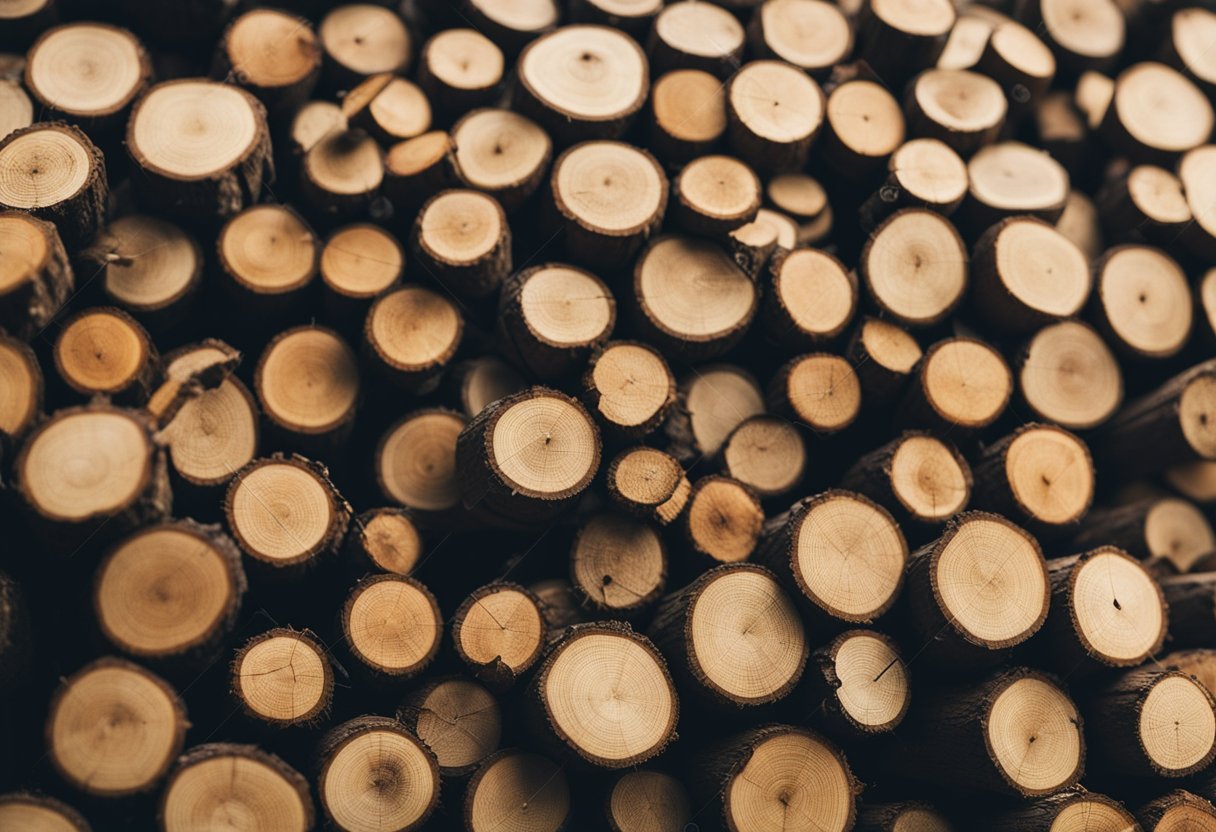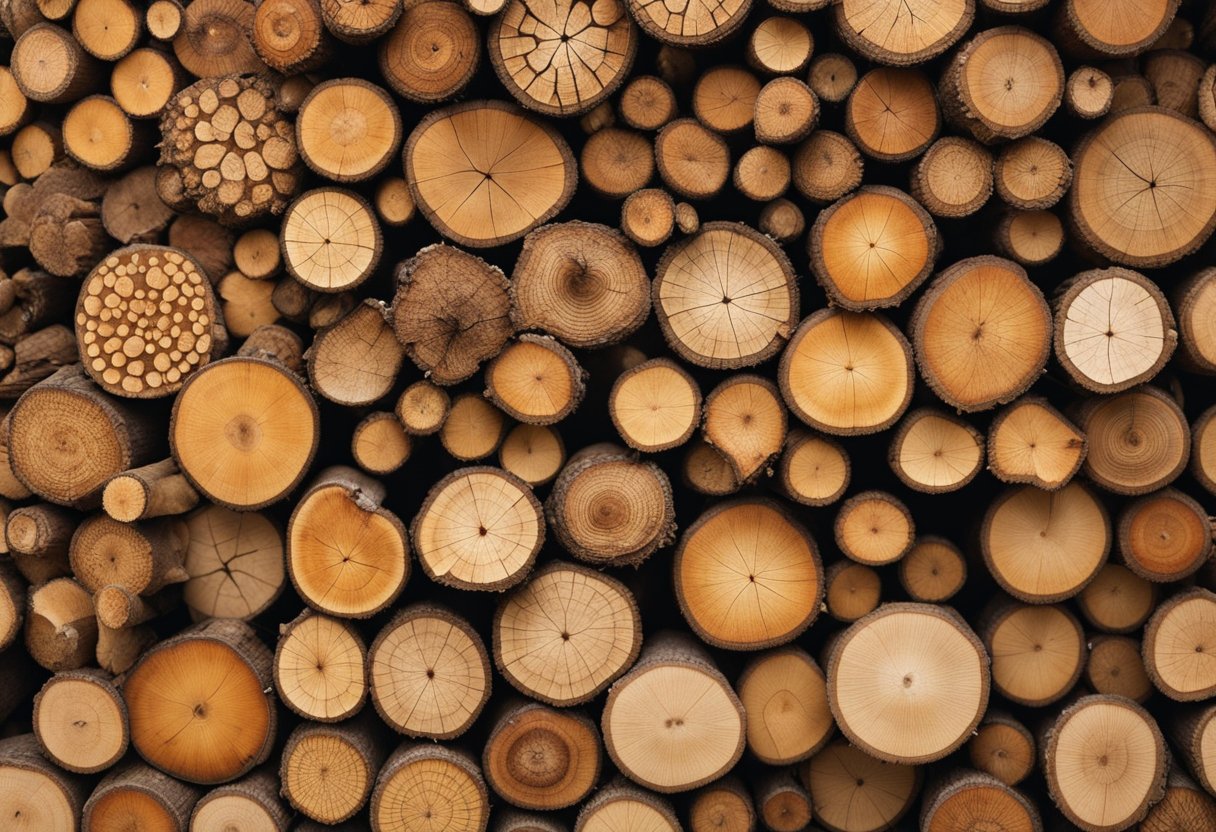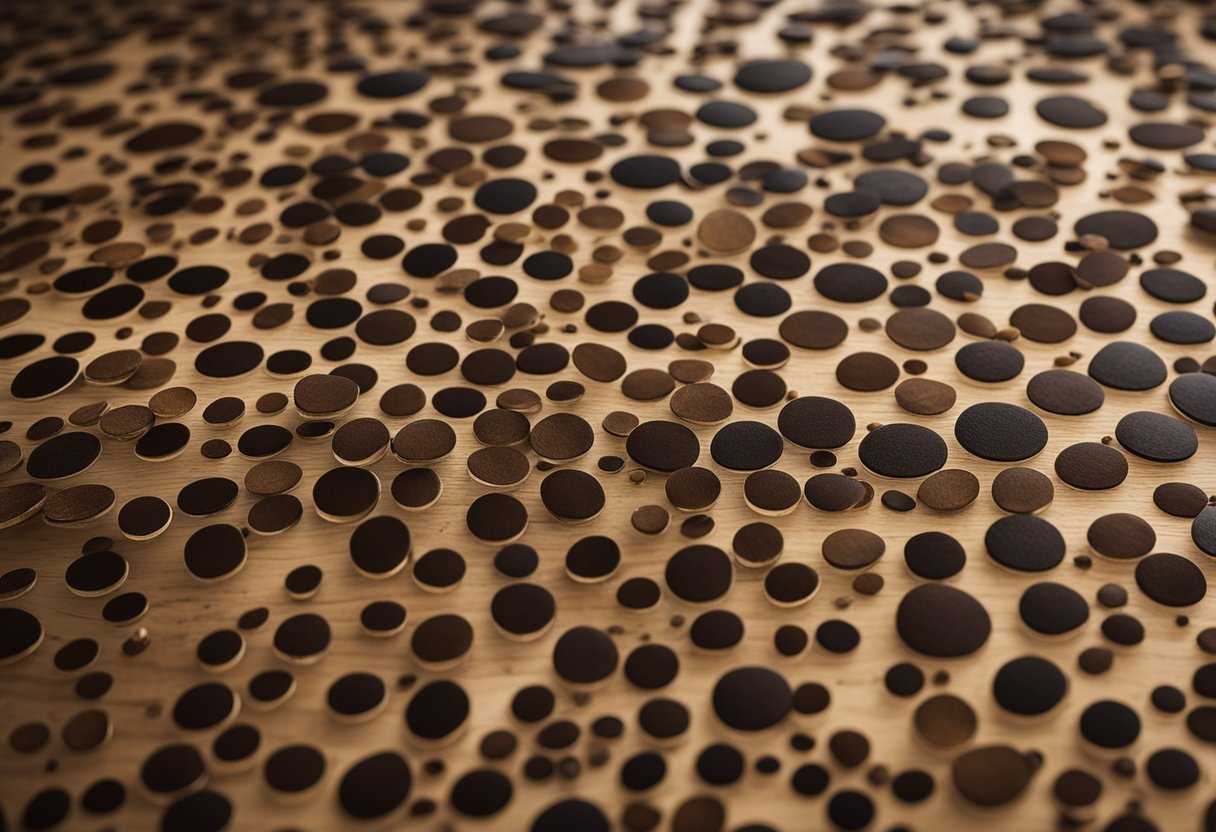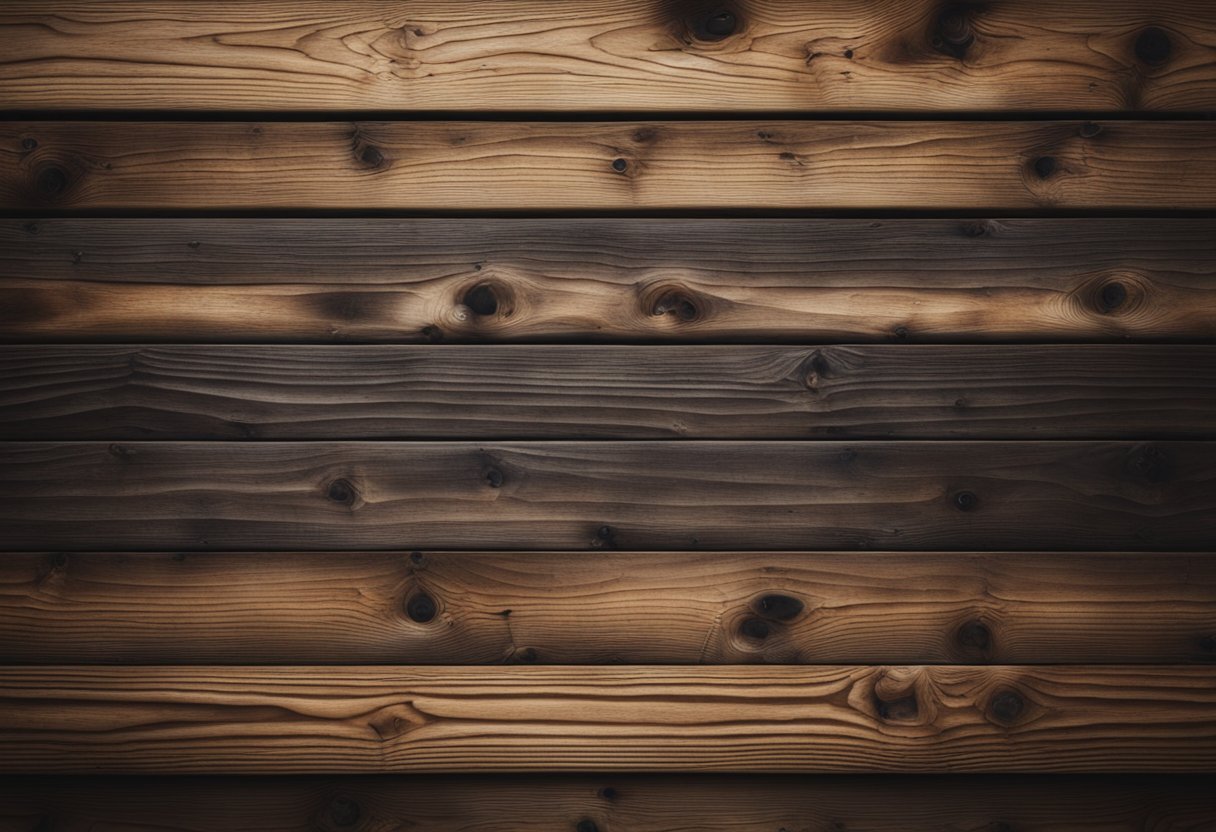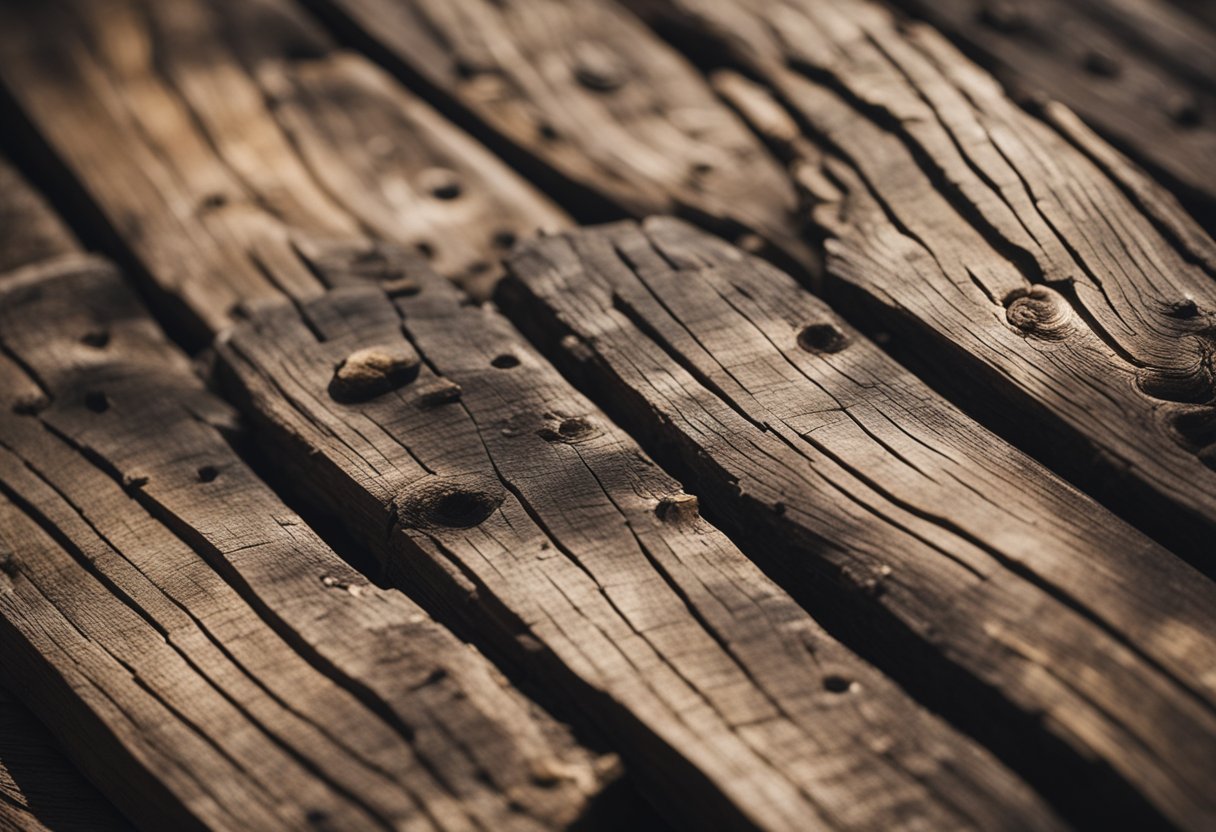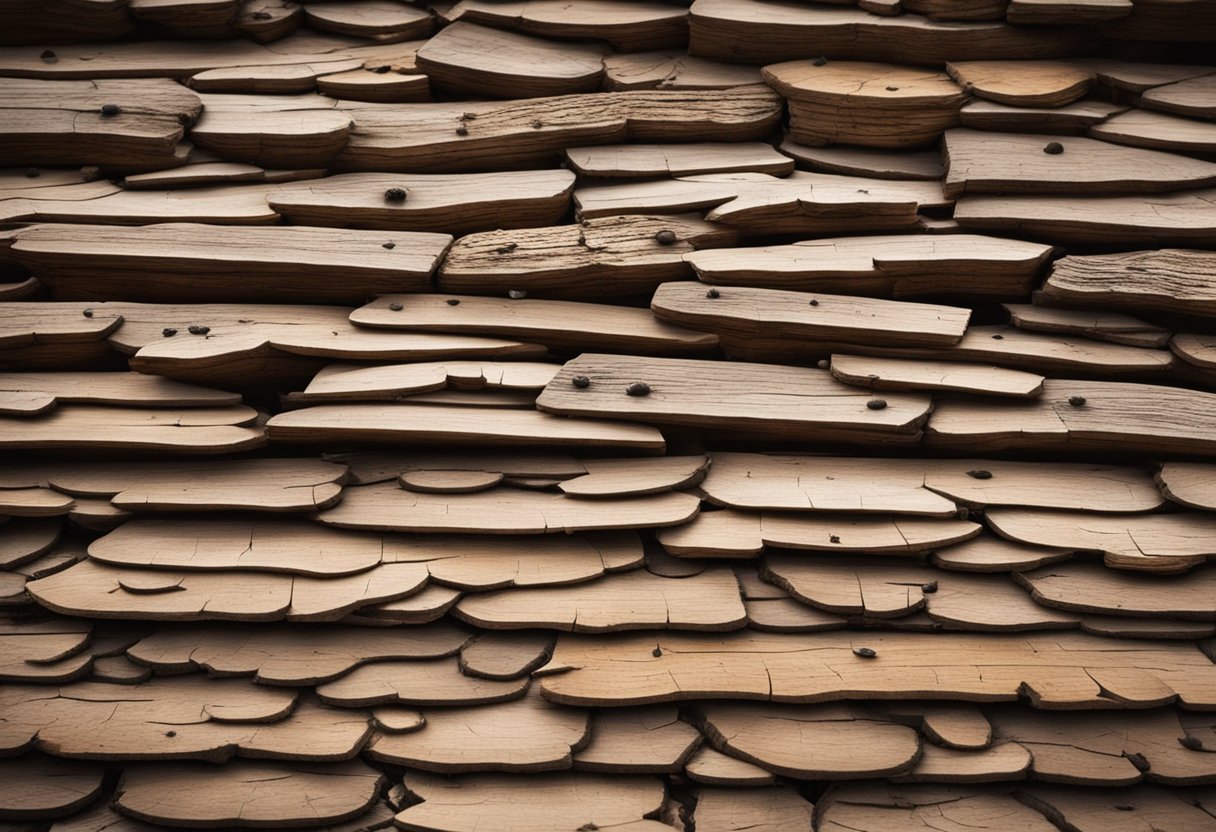As a homeowner or a woodworker, it is not uncommon to notice black spots on wood. These spots can be a nuisance and may affect the overall appearance of the wood. However, before attempting to remove the black spots, it’s important to identify the cause and type of the spots.
Identifying black spots on wood is the first step in determining the best method of removal. These spots can be caused by a variety of factors, including water damage, mold, mildew, and insects. Some types of wood are more susceptible to black spots than others, so it’s important to know what kind of wood you’re dealing with.
Key Takeaways:
- Identifying the cause and type of black spots on wood is crucial before attempting to remove them.
- Different types of wood have varying degrees of susceptibility to black spots.
- Prevention is key in avoiding black spots, but if they do occur, there are various methods of removal available.
Identifying Black Spots on Wood
https://www.youtube.com/watch?v=bZAWqSvpEK8&embed=true
As a woodworking enthusiast, I have come across black spots on wood several times. Black spots on wood can be caused by a variety of factors, including mold, fungi, and iron stains. Identifying the cause of black spots on wood is essential in determining the best method of treatment.
One of the most common causes of black spots on wood is mold. Mold can grow on wood when it is exposed to moisture for an extended period. The black spots caused by mold are usually fuzzy and can be wiped off with a damp cloth. However, if left untreated, mold can cause further damage to the wood.
Another cause of black spots on wood is fungi. Fungi can grow on wood that is exposed to moisture and can cause discoloration and decay. The black spots caused by fungi are usually more irregular in shape than those caused by mold and can be difficult to remove.
Iron stains can also cause black spots on wood. Iron stains occur when iron particles come into contact with wood and rust. The rust can then transfer to the wood, causing black spots. Iron stains are usually more common in outdoor furniture and can be difficult to remove.
In conclusion, identifying the cause of black spots on wood is crucial in determining the best method of treatment. Whether it is mold, fungi, or iron stains, it is essential to take the necessary steps to prevent further damage to the wood.
Causes of Black Spots
https://www.youtube.com/watch?v=otV51XLXa4A&embed=true
As a woodworker, I have come across black spots on wood many times. Black spots on wood can be caused by different factors, including moisture, pet urine, water stains, leaks, mold, and water damage.
One of the most common causes of black spots on wood is moisture. When water penetrates the wood, it can cause black spots to form. This is because the water reacts with the tannins in the wood, causing a chemical reaction that results in black spots. To prevent black spots caused by moisture, it is important to keep the wood dry and well-ventilated.
Another common cause of black spots on wood is pet urine. When pets urinate on wood, the urine can penetrate the wood and cause black spots to form. To prevent black spots caused by pet urine, it is important to clean up any spills or accidents immediately.
Water stains can also cause black spots on wood. When water sits on wood for an extended period, it can cause black spots to form. To prevent water stains, it is important to wipe up any spills or water immediately.
Leaks can also cause black spots on wood. When water leaks into the wood, it can cause black spots to form. To prevent leaks, it is important to fix any leaks in your home immediately.
Mold can also cause black spots on wood. When mold grows on wood, it can cause black spots to form. To prevent mold growth, it is important to keep the wood dry and well-ventilated.
Water damage can also cause black spots on wood. When wood is exposed to water for an extended period, it can cause black spots to form. To prevent water damage, it is important to keep the wood dry and well-protected.
In conclusion, black spots on wood can be caused by different factors, including moisture, pet urine, water stains, leaks, mold, and water damage. To prevent black spots on wood, it is important to keep the wood dry and well-maintained.
Types of Wood and Their Susceptibility
Different types of wood have varying levels of susceptibility to black spots. Some woods are more prone to black spots than others. For example, oak is more likely to develop black spots than other types of wood. This is because oak contains high levels of tannic acid, which reacts with iron to produce black stains.
Hardwood floors are also susceptible to black spots. Hardwood flooring is made from a variety of woods, and some of these woods are more prone to black spots than others. Red oak, for example, is a popular hardwood flooring choice that is also prone to black spots.
It’s important to note that not all black spots are the result of tannic acid reacting with iron. Some black spots are caused by mold or mildew, which can grow on wood that is exposed to moisture. This is especially true for hardwood floors, which are often exposed to spills and other sources of moisture.
To prevent black spots from forming on your hardwood floors, it’s important to keep them clean and dry. Regular sweeping and mopping can help remove dirt and debris that can contribute to the growth of mold and mildew. It’s also important to address any spills or other sources of moisture as soon as possible to prevent them from seeping into the wood and causing damage.
In summary, the susceptibility of wood to black spots varies depending on the type of wood and the conditions it is exposed to. Oak and other tannic acid woods are more prone to black spots, while hardwood floors are susceptible to black spots caused by mold and mildew. By taking steps to keep your hardwood floors clean and dry, you can help prevent black spots from forming and keep your floors looking their best.
Preventing Black Spots
https://www.youtube.com/watch?v=6lMU8r3av_k&embed=true
As a woodworker, I have learned that prevention is always better than cure. Here are some tips to help you prevent black spots from appearing on your wood surface.
Surface Preparation
One of the most important aspects of preventing black spots is proper surface preparation. Before applying any finish, it is essential to sand the wood surface thoroughly. Sanding helps to remove any dirt, dust, or debris that may be present on the surface. It also helps to open up the wood pores, allowing the finish to penetrate deeper into the wood.
Surface Finish
Choosing the right surface finish is also crucial in preventing black spots. Polyurethane is a popular choice for wood finishing because of its durability and resistance to scratches and stains. However, it is essential to choose a polyurethane finish that is hard and not soft. Soft finishes tend to attract dirt and debris, which can lead to black spots.
Proper Storage
Proper storage of wood is also important in preventing black spots. Wood should be stored in a dry and well-ventilated area to prevent moisture buildup. Moisture can cause the wood to rot, which can lead to black spots. It is also important to store wood away from direct sunlight, as UV rays can cause the wood to fade and become discolored.
Regular Maintenance
Regular maintenance of your wood surfaces is also important in preventing black spots. Dusting and cleaning your wood surfaces regularly can help to prevent dirt and debris buildup, which can lead to black spots. It is also important to inspect your wood surfaces regularly for any signs of damage or wear and tear.
By following these tips, you can prevent black spots from appearing on your wood surfaces. Proper surface preparation, choosing the right surface finish, proper storage, and regular maintenance are all essential in keeping your wood surfaces looking their best.
Methods of Removing Black Spots
https://www.youtube.com/watch?v=OW7sVPEn35s&embed=true
As a woodworker, I have come across many instances where black spots have ruined the appearance of my wooden furniture. Fortunately, there are several effective methods of removing black spots from wood. In this section, I will discuss some of the most popular methods that you can use to remove black spots from your wooden furniture.
Sanding
Sanding is one of the most common methods of removing black spots from wood. It involves using sandpaper to remove the top layer of the wood, which also removes the black spots. However, sanding can be time-consuming and requires a lot of effort. Additionally, sanding can also damage the wood if not done properly.
Bleaching
Bleaching is another effective method of removing black spots from wood. It involves using bleach to lighten the wood and remove the black spots. However, bleach can be harmful to the wood if not used properly. It is important to follow the instructions carefully and to wear protective gear when using bleach.
Using Vinegar
White vinegar is a natural and safe way to remove black spots from wood. Simply mix equal parts of white vinegar and water and apply the mixture to the affected area. Let it sit for a few minutes and then wipe it off with a clean cloth. Vinegar is effective in removing black spots from wood because it contains acetic acid, which breaks down the stain.
Using Baking Soda
Baking soda is another natural and safe way to remove black spots from wood. Simply mix baking soda with water to form a paste and apply the paste to the affected area. Let it sit for a few minutes and then wipe it off with a clean cloth. Baking soda is effective in removing black spots from wood because it is a mild abrasive that can gently scrub away the stain.
In conclusion, there are several effective methods of removing black spots from wood. Whether you choose to sand, bleach, or use natural remedies like vinegar and baking soda, it is important to take the necessary precautions and to follow the instructions carefully. With a little effort and patience, you can restore the natural beauty of your wooden furniture.
Safety Measures
As someone who has worked with wood for years, I know that safety is always a top priority. When dealing with black spots on wood, it’s important to take the necessary precautions to protect yourself from any potential hazards.
First and foremost, I always recommend wearing rubber gloves when working with wood. This will protect your hands from any chemicals or debris that may be present on the wood. Additionally, it’s a good idea to wear goggles to protect your eyes from any dust or debris that may be kicked up during the process.
When removing black spots from wood, it’s important to use the right tools and products. Always read the instructions carefully before using any chemicals or cleaning agents. If you’re unsure about how to use a particular product, don’t hesitate to ask for help or consult a professional.
In addition to using the right tools and products, it’s important to work in a well-ventilated area. This will help to prevent the buildup of harmful fumes or dust. If you’re working indoors, consider opening a window or using a fan to help circulate the air.
By taking these safety measures, you can help to ensure that your project goes smoothly and safely. Remember, when it comes to working with wood, safety should always come first.
Post Treatment Care and Maintenance
After removing black spots from wood, it is important to take proper care of it to prevent future damage. Here are some tips for post-treatment care and maintenance:
Refinishing
If the wood has been refinished after removing the black spots, it is important to follow the manufacturer’s instructions for care and maintenance. This may involve applying a protective coating to the wood to prevent damage from moisture and UV rays.
Finish
If the wood has not been refinished, it is important to apply a protective finish to prevent future damage. There are many types of finishes available, including oil-based and water-based finishes. It is important to choose a finish that is appropriate for the type of wood and the intended use of the wood.
Bare Wood
If the wood has been stripped of its finish, it is important to apply a new finish to protect the wood from damage. This may involve sanding the wood to remove any remaining finish and applying a new finish.
Furniture
If the wood is part of a piece of furniture, it is important to avoid placing hot or wet objects on the wood, as this can cause damage. It is also important to avoid using harsh chemicals on the wood, as this can damage the finish.
Deck
If the wood is part of a deck, it is important to keep the deck clean and free of debris. This can be done by sweeping the deck regularly and using a pressure washer to remove dirt and grime. It is also important to apply a protective coating to the deck to prevent damage from moisture and UV rays.
Overall, taking proper care of wood after removing black spots is essential to maintaining its beauty and durability. By following these tips, you can ensure that your wood remains in good condition for years to come.
When to Seek Professional Help
As I mentioned earlier, removing black spots on wood can be a challenging task. It requires patience, skill, and the right tools. If you have tried all the DIY methods and still can’t get rid of the black spots, it may be time to call in a professional.
A professional woodworker will have the experience and expertise to deal with hard stains and dark stains on your wood. They will be able to assess the damage and determine the best course of action to restore the aesthetics of your wood.
In addition, a professional will have access to specialized equipment and chemicals that are not readily available to the average DIYer. This means that they can remove the black spots more efficiently and effectively, without causing any further damage to your wood.
However, it’s important to note that seeking professional help can be expensive. So, before you make the decision to hire a professional, make sure you weigh the cost against the benefits.
In conclusion, if you have tried all the DIY methods and still can’t get rid of the black spots on your wood, it may be time to seek professional help. A professional woodworker will have the experience, expertise, and tools to restore the aesthetics of your wood.
Frequently Asked Questions
What causes black stains on wood?
Black stains on wood are usually caused by a reaction between iron and tannins in the wood. This reaction is triggered when metal objects are left in contact with the wood for an extended period. For example, if you leave a nail or screw on a wooden surface for a long time, it can cause black stains to appear.
How to remove black stains from exterior wood?
To remove black stains from exterior wood, you can use a wood cleaner or a wood brightener. These products are designed to remove stains and discoloration from wood surfaces. You can also use a pressure washer to clean the wood, but be careful not to damage the surface.
Are black spots on wood mold?
Not all black spots on wood are mold. Black stains caused by iron and tannins are not mold. However, if the black spots are fuzzy or have a musty smell, it could be mold. In this case, it is important to take steps to remove the mold as soon as possible.
Is black mold on wood dangerous?
Black mold on wood can be dangerous, especially if it is left untreated. Black mold can cause health problems, including respiratory issues, allergies, and headaches. If you suspect that your wood has black mold, it is important to take steps to remove it as soon as possible.
How do you treat black spots on wood?
To treat black spots on wood, you can use a wood cleaner or a wood brightener. These products are designed to remove stains and discoloration from wood surfaces. If the black spots are caused by mold, you will need to use a mold removal product to treat the wood.
What are the black dots coming out of wood?
The black dots coming out of wood are usually caused by a fungus called “shot hole” fungus. This fungus attacks the wood and causes small, black dots to appear on the surface. While it is not harmful to humans, it can weaken the wood and make it more susceptible to damage. If you notice black dots coming out of your wood, it is important to take steps to treat the wood and prevent further damage.

Hi, I’m Sal Muller of Tooltrip.com. My DIY experience led me to understand essential power tools for home projects. Tooltrip.com guides enthusiasts and professionals in choosing right tools for any job. I provide concise top tool reviews for easier, efficient DIY.

